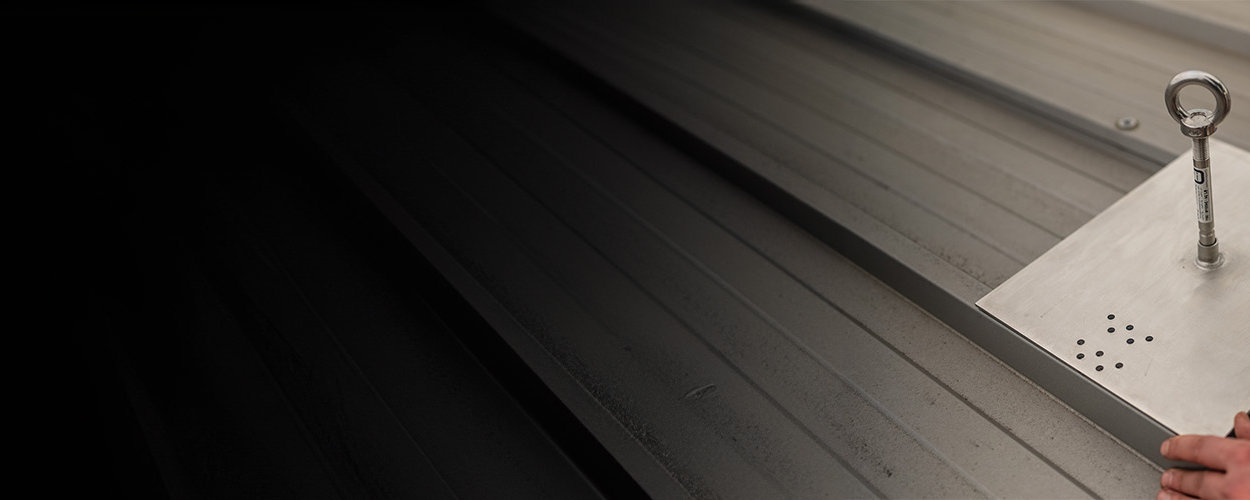Anchor devices in fall protection - definition
Anchor devices are defined in the DGUV prevention guideline ‘Performance of expert inspections on anchor devices’ from May 2011 as a component of personal fall protection systems. Fall protection systems consist of a body-holding device (harnesses/restraint belts) and an attachment system (lanyards, fall arresters, fall arresters, anchor devices).
The anchorage device is a system consisting of at least one (temporary) anchorage point, via which the connection between the fall arrest system and the building/structure is established. Anchor devices are often permanently connected to the structure, but can also be installed and used temporarily.
Another definition can be found in DGUV Rule 112-198 ‘Use of personal protective equipment against falls from a height’, which describes anchor devices as ‘components in fall arrest, restraint or work positioning systems’. A more comprehensive definition can be found in DIN 795 - Personal fall protection equipment - Anchor devices:
"Assembly of components with one or more anchorage point(s) or movable anchorage points, which may include a fastener, which is intended to be usedas part of a personal fall arrest system, which is intended to be removable from the structure and to form part of the anchorage system"
Temporary and permanent anchor devices
Temporary anchorage devices are not permanently attached to the structure/substructure and are removed again after use. Examples of mobile anchor points are: Tripods, beam clamps or anchorage devices based on dead weight.
On the other hand, there are permanent anchorage devices that are intended to remain in place permanently. These include, for example: Eyebolts, rope and rail systems, single anchor points or safety roof hooks. These are also referred to in the DGUV prevention guideline as “anchorage devices as part of a structural system/machine”.
Movable and rigid anchor devices
DGUV Information 201-056 “Planning principles for anchorage devices on roofs” also distinguishes between movable and rigid anchorage devices.
Rigid anchorage devices are based on anchorage points with a single eyelet. Movable anchor devices refer to rail and cable systems where the user attaches themselves to a slider. This slider can move along the anchorage device and therefore considerably increases the user's range of movement.
Difference between anchorage devices and anchorage options
According to DGUV Rule 112-198, the term anchorage points describes sufficiently load-bearing components of structural systems, machines or equipment for the purpose of temporarily securing personal fall protection equipment (PPE). Examples include wooden beams, steel girders and tubular structures where the fall arrest system cannot unintentionally detach from the anchorage point and can transfer at least 6kN into the structure.
